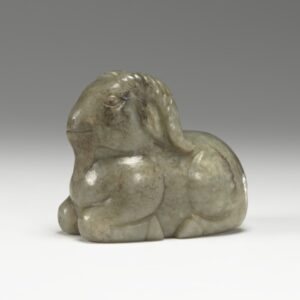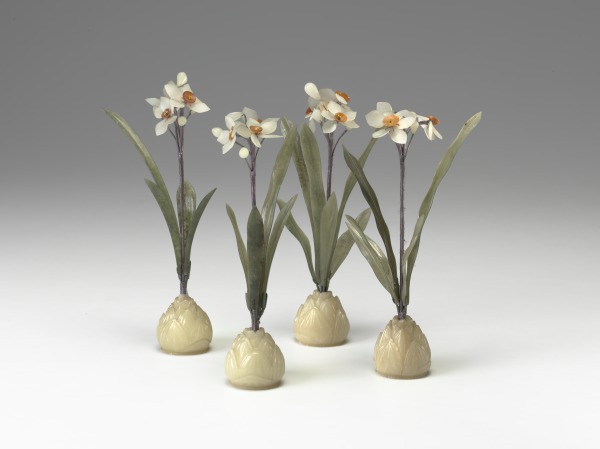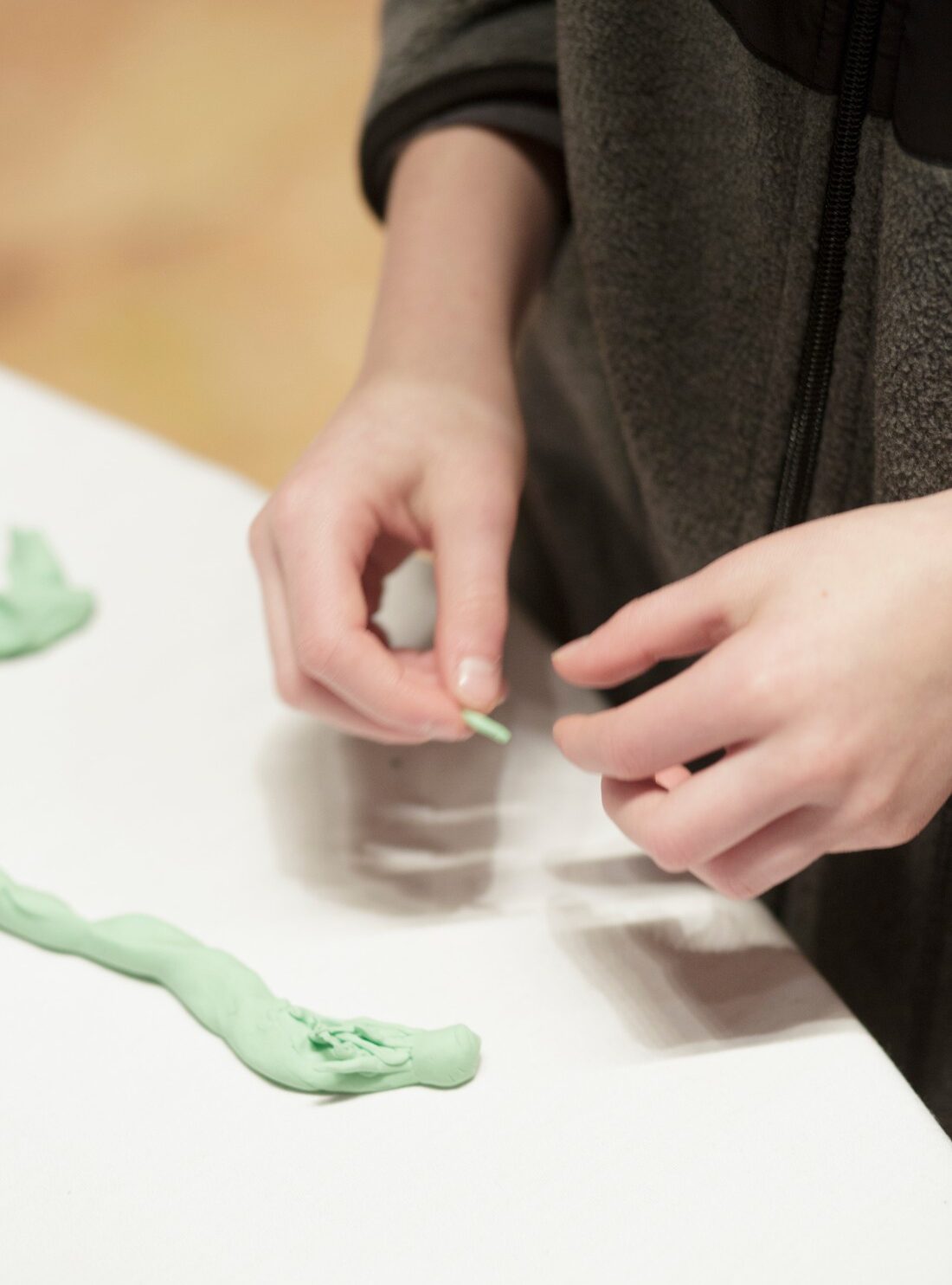
Art-Making Activity: Make a Faux Jade Sculpture
Learn about how jade was a material often found in sculptures that were discovered in ancient Chinese tombs. Students will understand the importance of animal symbolism and use of objects as offerings in ancient Chinese culture. This is also an exercise in fine motor skills to mold 3-D forms and create a representational animal such as the jade sculptures in the VMFA Chinese galleries!
Overview
Throughout Chinese history, the most valued materials were jade, bronze, silk, and lacquer. Jade is considered highly valuable and has been treasured for thousands of years. Jade objects of animals and replicas of tools and weapons have been discovered in ancient Chinese tombs, dating back to 7,000 years. Because of its rarity and hardness, in anicent China it was a material often used for ceremony, adornment, and ritual.
The Chinese word for Jade is yu, which actually has a more general meaning to embrace many shades of green, grey, and brown hardstones. Jade refers to two types of minerals, jadeite and nephrite. Jade is made up of aluminum and a silicate of sodium. Jadeite, which was found in Burma, is a darker green and was not used in China until the 18th century. Nephrite, found in central China, is lighter in color and also has color variations. Both are quite strong and difficult to work because of their tight crystalline structure. The jade objects found in China before the 18th century are actually nephrite. Jade was found in rivers where boulders broke off and washed down. Craftsmen then cut them into slices to begin their work. To work into sculptural forms they must be ground with abrasive sand. The Chinese produced a surprisingly large number of beautiful jade carving considering how difficult the material is to work with. It is polished to a very smooth finish and the texture and look of the material has symbolic reference to purity, beauty, immortality, and wisdom.

White Narcissus Flowers, 18th-19th century, Chinese, Qing dynasty, nephrite, silk thread, metal. Virginia Museum of Fine Arts, bequest of Lillian Thomas Pratt, 47.20.454a-d
Jade carving was popular during the Neolithic time, around 4,500 BC. Ceremonial versions of stone tools, as well as animals and adornments were carved out of jade and placed in tombs in the Liaoning province in the Hongshan culture. Possessing carved jade could have been a symbol of power and wealth. A popular form was the cong and the bi, which were rectangular tube shapes and flat discs. Animal carvings were less prolific probably because most of the objects were carved from thin slabs and the dimensional animals required larger pieces of jade. In the tomb of Fu Hao, a powerful woman and concubine of the Shang dynasty, 755 jade artifacts were found, including a huge number of different animals as well as dragons. Animals were important as symbols of contact with the spirit world and protection in the afterlife. The use of jade has remained popular throughout Chinese history. Later in the Ming and Qing periods ancient jades and decorative motifs were copied, and brought the ancient past through time and into the present.
Activity
Materials:
- Green and white model magic
- Small boxes to take home sculptures
- Clay tools for creating textures
Directions:
- Tear off a plum – sized piece of white Model Magic clay. Take a grape sized piece each of blue and yellow Model Magic clay and mix the two together until the color is light green.
- Divide your ball into three equal pieces or thirds. Use one third and roll a small oval shape for a body.
- Use a separate piece and roll four cylinders. Next, add them to the underside of the body.
- Use the final piece to roll a small ball for the head. Pinch or pull out a tail, horns, or ears.
- Press with clay tools to make nostrils, eyes, and hooves.
- Use clay tools to add a fury texture to the body.







